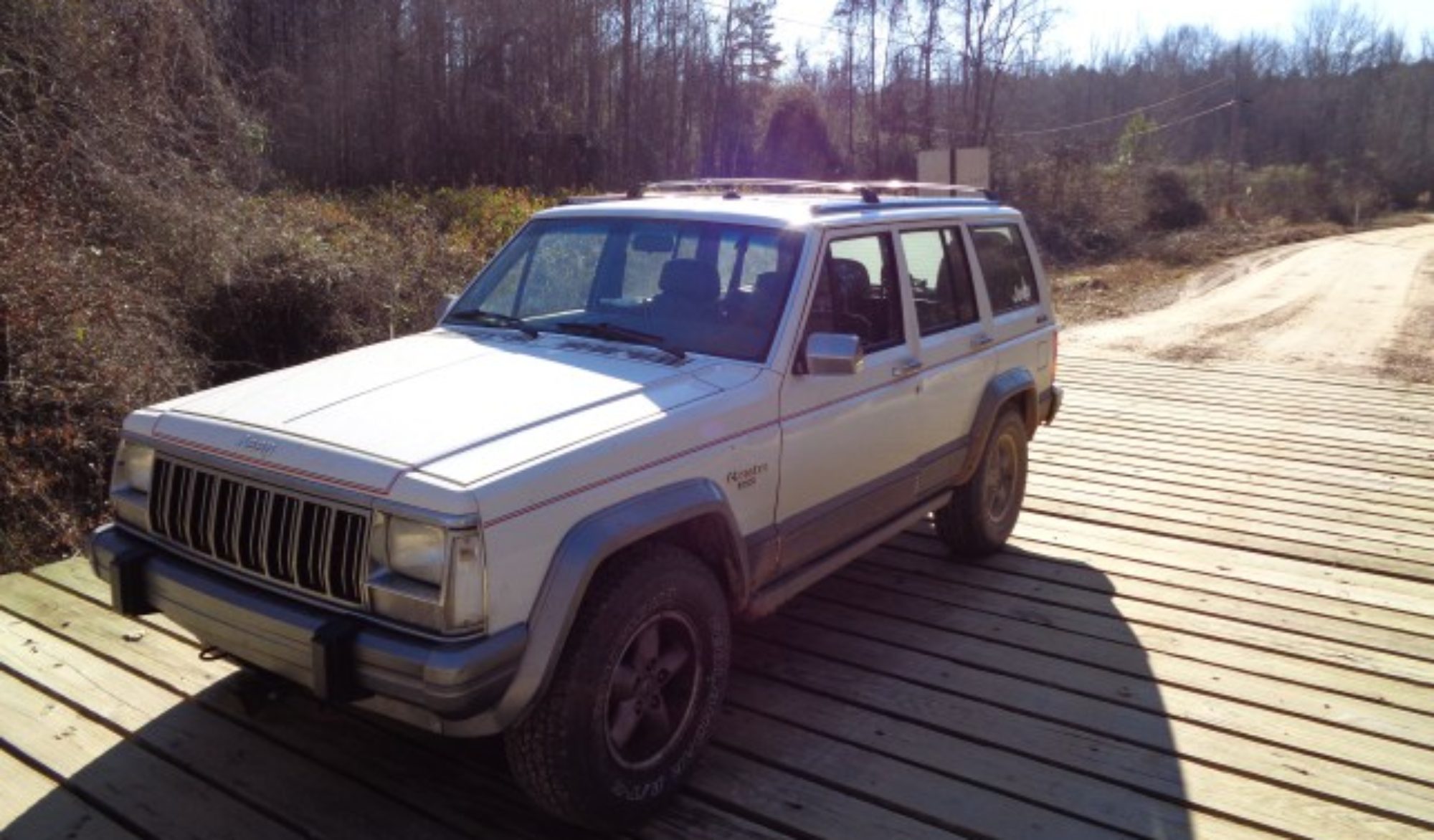Trail Maintenance and a broken U Joint
The last wind storm put a few trees down across the trails on my farm. The creek crossing spot has multiples angles that you can attack if from but they were all blocked by two large trees.
I finally got to use the new Chainsaw my dad gave me for Christmas. I took it out of the box for the first time. I was out of fuel so I stole a gallon from the ZJ that I have been working on. I hooked up my fuel pressure tester and jumpered the fuel pump relay and pumped a gallon into my small gas can.
I mixed in the little bottle of 2 stroke oil that came with the saw and filled the tank. Next I added chain oil to the reservoir. I also managed to spill oil all over the new saw and the floor. This oil is very sticky and hard to clean up, I might add.
It took me a moment to figure out how to switch on the ignition. The instructions say to flip the switch them pull the choke. Well before I broke the switch, I realized there was an interlock that causes the switch to flip as you pulled out the choke. I don’t see any other way to flip the switch on.
I pushed the primer bulb a few times and pulled the rope a few times. I was very happy that my new saw roared to life. I made a test cut and I was ready to go to work.
By that time it had started to rain lightly. Janice, Jennifer and I donned our rain gear and headed down the hill. I cut the trees into sections small enough for the girls to haul off the trail.
The first tree was easy, but the second one spanned the creek. Walking across the log was the only way to cross the creek with out getting wet. I walked across the log and found a way to cut the log loose from the stump and let it fall in the water so I could still walk on it.
I hiked back up the hill and got Jenny’s Jeep to help haul away the logs. I drove down in the creek and hooked a strap to the first long section. I drug it down the creek to a place out of the way. When I tried to back up, I got hung up in the mud and started to slide sideways against a tree the overhangs the creek.
I thought I could go forward and climb the bank further down. However the steady rain made the bank too slick to climb from that angle. I tried to drive on down the creek but I got wedged between a rock and the other bank in a narrow and deep section.
I finally was able to walk one front tire up the rock and do a rear dig to bring the back into the right angle to back up the creek. Then I was able to get the proper angle to climb up the creek bank.
One the drama of being stuck was over, I backed back into the creek and lined up to pull the remaining stump. The stump proved too heavy to drag down the creek. The Jeep just dug in and would not move forward. I did manage to get the stump clear of one of the paths across the creek and dislodged form the creek bank. I hoped that soon the creek would rise and move the stump out of the way.
The trail up the hill to the house was already getting very slick as we made our way back up. I had to use much more throttle than normal to climb it. Right at the top we heard a loud pop, but could not figure out what it was.
The next day, the overnight rains had completely flooded the bottom land and the creek bed looked like a lake. The stump was no where to be seen. It will be interesting to see where it ended up when the water recedes.
As I was hiking the trail, I noticed a U joint cap near the spot where we had heard the pop. I crawled under the Jeep and began checking all the U joints. I found the missing cap belonged on the driver’s side axle. Luckily we keep a spare around.
Twenty minutes later we had the spare shaft installed and she was ready to go again. Looks like the C clip twisted out then the cap worked loose. Another argument for welding the caps I suppose. I still have not tried welding the caps.


